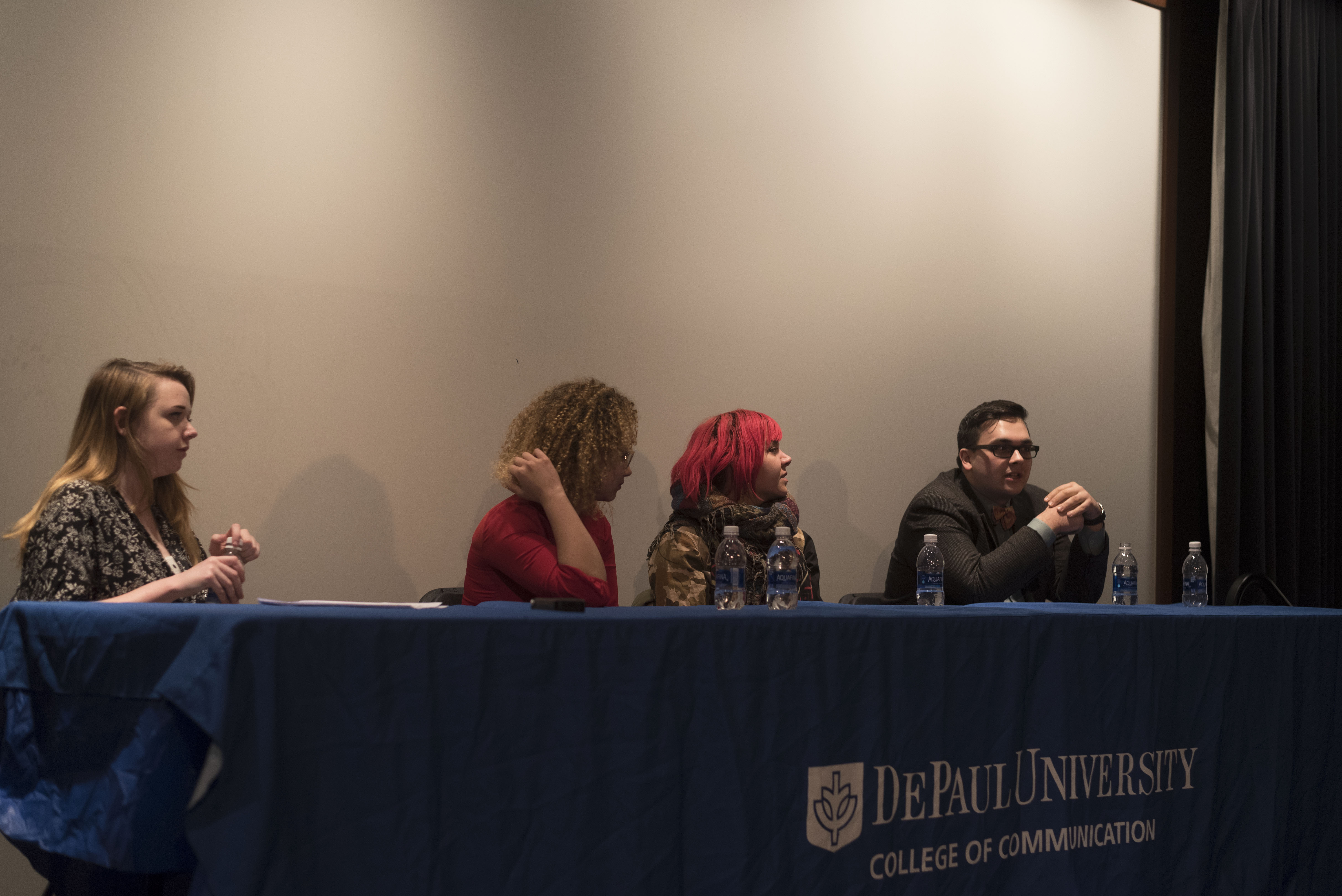Summer Fields of Hearken, Andrea Faye Hart of City Bureau and Julian Hayda of WBEZ discuss audience engagement
On February 27, 14 East hosted an engagement panel featuring Andrea Faye Hart, a co-founder and community engagement director at City Bureau; Summer Fields, an engagement consultant at Hearken; and Julian Hayda, a producer for the Worldview at WBEZ. The event, moderated by Carina Smith, an associate editor at 14 East, discussed ways to incorporate the community in reporting.
Engagement is essential to the success of a news organization. There is a distinction, though, between the typical definition of engagement and the type discussed at the panel. Some newsrooms consider engagement to be clicks, views and social media interaction, a numerical measurement that determines an organization’s reach. This can be true, though Smith, Hart, Fields and Hayda discussed a different kind of engagement at the panel.
The panelist discussed engagement in terms of audience participation in the reporting process. This means deferring to readers, viewers and listeners about what they are interested in and what they care about to determine what to report on. It means building relationships with your audience and including them in your reporting. It’s crowdsourcing information, outlet transparency and direct interaction with an audience.
Fields, Hart and Hayda further discussed how they incorporate engagement into their work and how college media can do the same. Below are four things we learned from our engagement panel.
1. Engagement should be built into the foundation of a news organization—not just parts of it.
“It’s very much a consistent thing. It’s not a one-off, project-based thing. I think a lot of times, when you look at newsrooms, they think about engagement specific to a project and they don’t necessarily have it baked into all of their programming,” Hart said. “But City Bureau does. So I serve as the director of community engagement, but it is something that everybody is thinking about.”
2. Audience participation is an essential part of engagement.
“Engagement is not just metrics of extraction, like clicks, shares, comments on Facebook. It’s not just extraction from the audience either, not consumption not extraction, user-generated polling, stuff like that,” Fields said. “If there’s no pathway for your audience to have some kind of input on the content and editorial decisions, that is not engagement.”
3. Write about what is important to your audience—not you as the reporter.
“I think there’s a constant tension between arrogance and humility,” Hayda said. “I think arrogance often wins, the arrogance to say I know what the audience wants, I know what the audience needs, I read about this thing and because of that it’s interesting to me, therefore we need to talk about it. And that works sometimes, especially if your audience is like you, but I think it takes a lot of humility and a lot of, to step back and say, I don’t know what’s important to some people.”
4. Start small in your approach. Each time you begin writing a piece ask yourself how your audience can participate in the reporting.
“Every time you think of a new project or beat, could you think about where does the audience come into this in the process, and what are the editorial strategies we can use to bring this to our audience,” Fields said.
Editor’s note: An earlier version of this piece had the full transcript of the panel.
Header image by 14 East magazine.




NO COMMENT